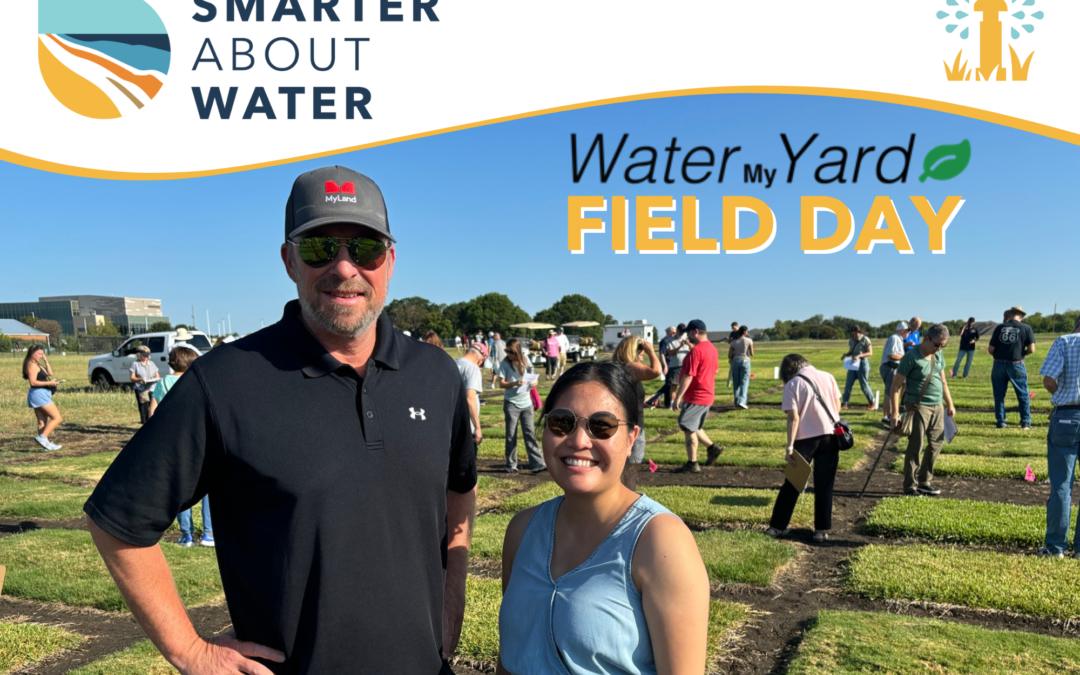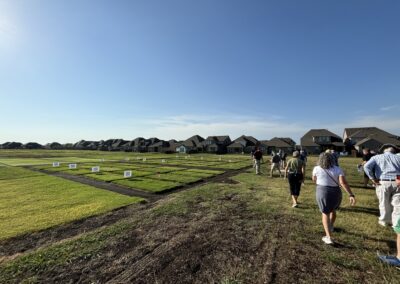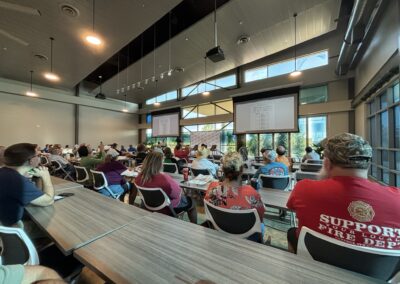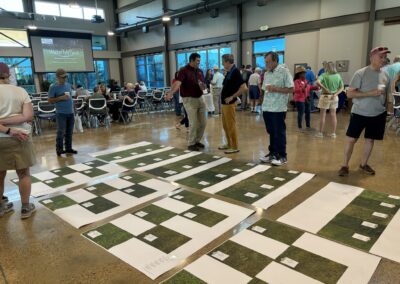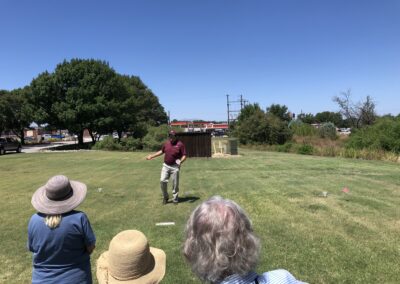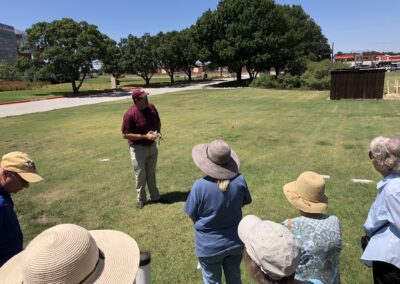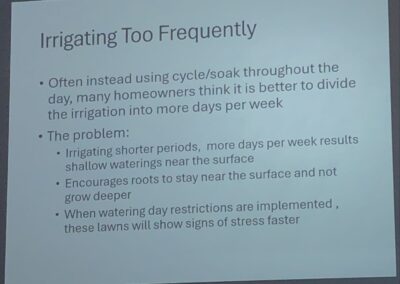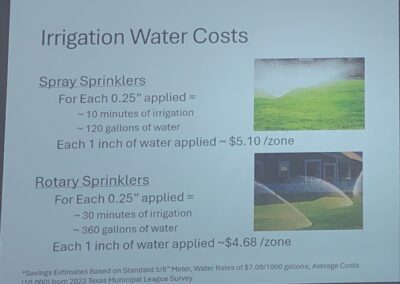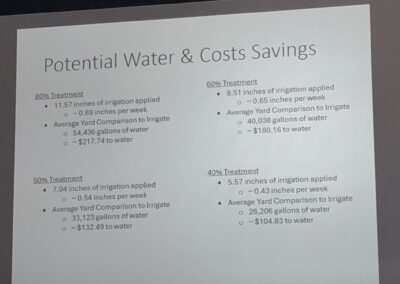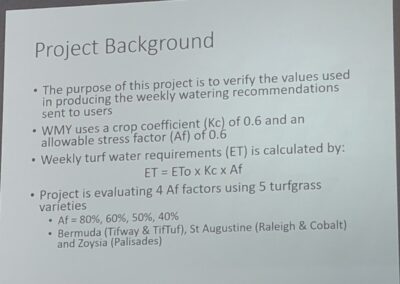Image: Lindy Murff (left) is a Harris-Galveston Subsidence District Board of Director and the Chair of the Water Conservation Committee who runs his family turf farm located in Harris County and Denise Ma (right) is the Water Conservation Program Coordinator for Harris-Galveston Subsidence District.
On August 3, 2024, the Texas A&M AgriLife Extension team welcomed over 130 participants for their first-ever Field Day to celebrate the 10-year anniversary of the WaterMyYard program. The program was initially developed in north Texas in response to the 2011 drought and now has expanded all over the state with 13 sponsors, including the Harris-Galveston and Fort Bend Subsidence Districts.
The field day started with the attendees visiting the Verification Study Research Site to provide feedback on which plot of grass had the most acceptable watering recommendations based on the turf’s appearance. The study included five different species of turf grass that are irrigated at four different evapotranspiration calculations (Af factors) to understand which would produce a healthy and acceptable turf.
Af factors: 80%, 60%, 50%, and 40%
Types of turf:
- (Tifway) Bermuda
- (TifTuf) Bermuda
- (Raleigh) St. Augustine
- (Cobalt)) St. Augustine
- (Palisades) Zoysia
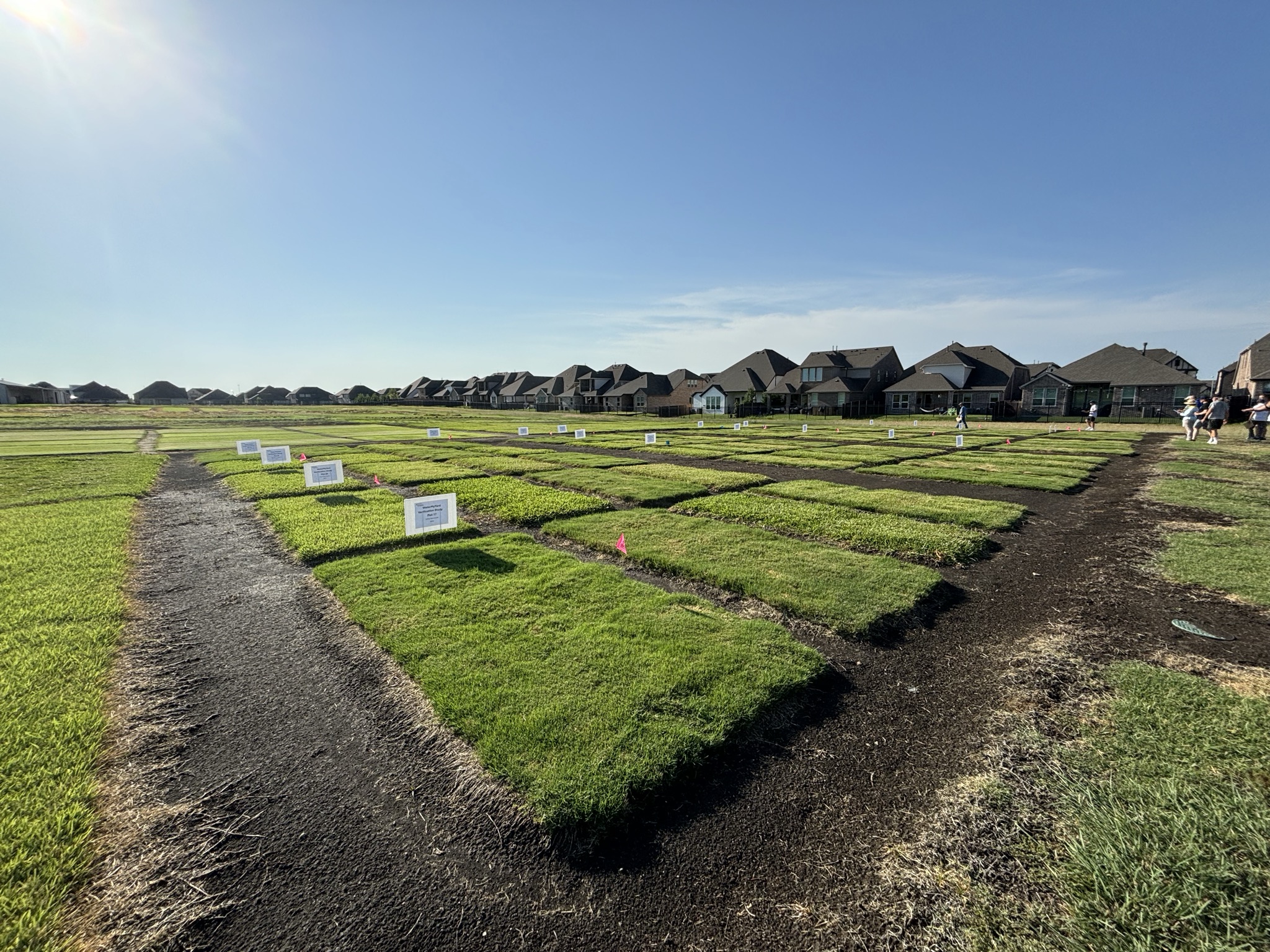
Image: WaterMyYard verification study plots of five turf grass varieties that were watered at four different percentages of watering.
Following the survey, Dr. Boeri, Turfgrass Extension Specialist, shared information on each of the turf species used for the study and discussed the advantages and disadvantages of each. The event concluded with Swanson discussing the common landscape irrigation mistakes that residents make and demonstrated how to use a catch can to measure the precipitation rate of an irrigation system.
Some of the common mistakes that were discussed:
- Precipitation rates – When using an irrigation system or program that is asking for a precipitation rate, most users associate that term with rainfall. However, in this case, it means the rate at which water is applied by the irrigation system. The precipitation rate can be found through the manufacturer or measured by using a rain gauge or catch can test.
- Irrigation runoff – The second common mistake that is visibly seen is irrigation runoff due to water being applied faster than it can infiltrate. To mitigate this problem, the cycle and soak method can be used to allow time for the water to soak down to the root systems which will promote plant health.
- Zoning for different landscapes—The zoning features on an irrigation system allow the user to set varying runtimes. This requires some understanding of the types of plants, whether they’re under shade, and the precipitation rate. Better understanding these three factors will allow for a more efficient use of the irrigation system and saving water.
About WaterMyYard
WaterMyYard provides homeowners with irrigation recommendations in inches and runtimes in minutes based on data taken from evapotranspiration (ET) weather stations to maintain a healthy lawn. The ET weather stations record temperature, relative humidity, solar radiation, rainfall, and wind to calculate evapotranspiration to provide watering recommendations. Evapotranspiration is a measurement of the total amount of water needed to grow plants and crops. The runtime and amount of irrigation recommended is based on the previous week’s weather data, however there is a feature on the app that allows the user to adjust the amount of rainfall in the case that it does not match with the weather station’s data.
WaterMyYard is a free app and program, and you can sign up at WaterMyYard.org or download the app on your mobile device. After signing up, customize your profile with the specific type of irrigation system that your home has, set different zones, and select which day you would like the recommendation notification to be sent to you. The notification can be sent via email, text, or through the app notification. The WaterMyYard recommendation also aligns with many drought watering restrictions while maintaining a healthy-looking lawn. It is an easy way to help you save water and money on your water bill while contributing to conserving the local water supply!
Although the Gulf Coast region has been cleared of a drought this season, stay proactive and learn more about conserving water at https://www.epa.gov/watersense/drought-watersense.

